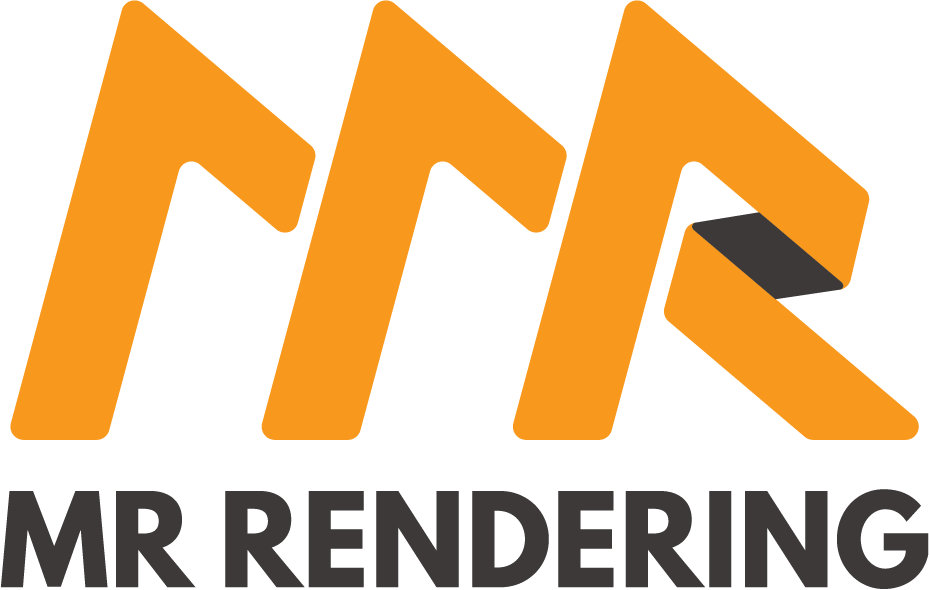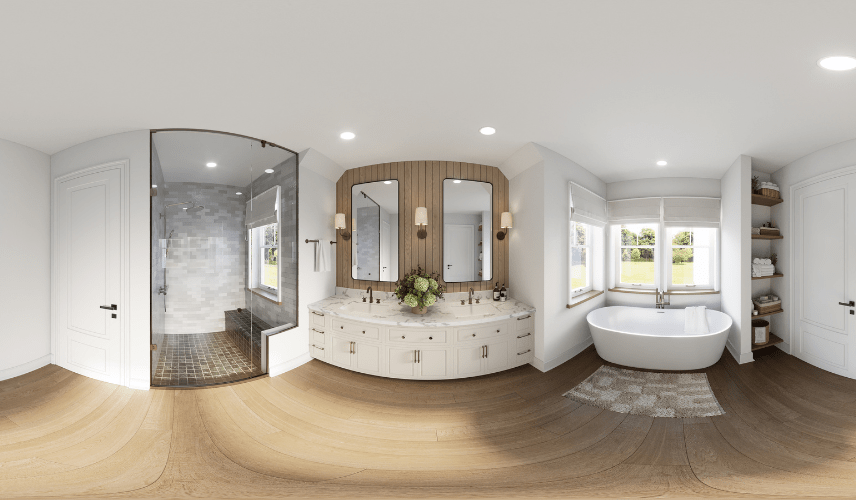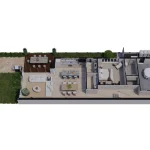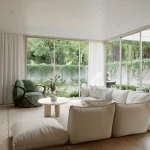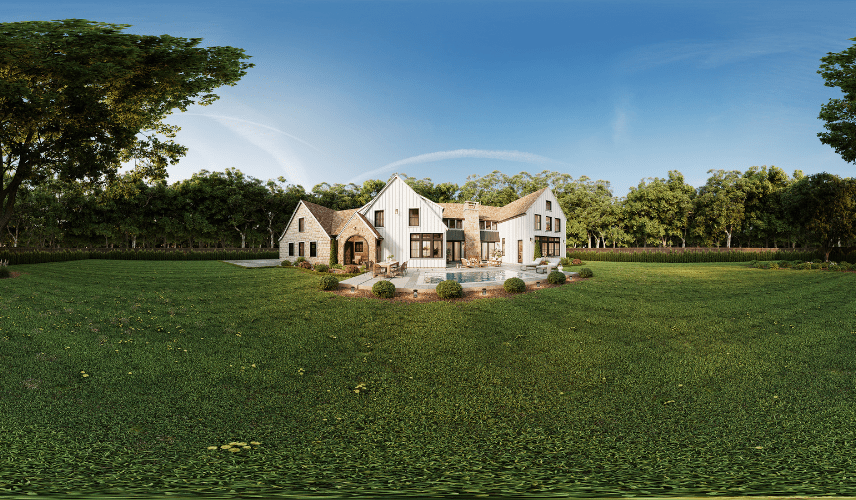
3D virtual tours have fundamentally transformed how properties are marketed, viewed, and sold in today’s digital-first real estate landscape. The statistics tell a compelling story: 73% of buyers say they’re more likely to list with agents who offer virtual tours, and properties featuring this immersive technology receive 87% more views than those relying solely on traditional photography. What began as a luxury amenity for high-end listings has rapidly become an essential baseline expectation across all property segments and price points.
The transformation of real estate marketing from static photos to immersive experiences reflects broader shifts in consumer behavior and technological capability. Today’s property buyers- whether searching for their first apartment, upgrading to a family home, or investing in commercial space- conduct extensive online research before ever contacting agents or scheduling physical viewings. They expect comprehensive information presented in formats that enable quick, confident decision-making from anywhere in the world.
(Read more about How 3D Rendering Dominates Real Estate Sales)
3D virtual tours deliver exactly this capability. Unlike photo galleries that show disconnected snapshots or video walkthroughs that force viewers through predetermined sequences, virtual tours provide interactive, self-guided exploration. Viewers navigate through properties at their own pace, spending time in spaces that matter most to them, examining details that catch their interest, and developing genuine spatial understanding that static imagery simply cannot communicate.
The COVID-19 pandemic accelerated adoption dramatically, forcing the real estate industry to embrace remote viewing technologies virtually overnight. What initially seemed like a temporary adaptation to extraordinary circumstances has become permanent infrastructure. Even as in-person viewings resumed, buyer expectations remained elevated- properties without virtual tours now face significant competitive disadvantages regardless of market conditions or health concerns.
For real estate professionals, developers, and property marketers, understanding how to leverage 3D virtual tours effectively has become critical for success. This comprehensive guide explores what virtual tours are, why they deliver measurable business results, how different technologies serve different needs, and how to implement virtual tour strategies that drive engagement, qualified leads, and faster sales cycles.

360° Panoramic View of a Modern Farmhouse Backyard in Australis – Read more about 3D virtual tours project in Australia
Decoding 3D Virtual Tours in Real Estate Context
3D virtual tours constitute interactive navigable digital replicas enabling remote property exploration that simulates physical presence. Unlike passive media consumption experiences, virtual tours empower users with complete agency- they determine viewing angles, select exploration sequences, establish pacing, and choose which details warrant closer examination.
The essential distinction between 3D virtual tours and alternative visualization approaches centers on interactivity coupled with spatial intelligence. Video walkthroughs, despite showing properties dynamically, impose rigid linear progressions- viewers cannot diverge to investigate personally relevant areas or revisit previous sections for comparative analysis. The experience mirrors riding transit through a property rather than independent exploration.
360 photography represents partial progress toward interactivity, permitting panoramic viewing from stationary vantage points. However, this format lacks fluid movement capability through environments. Navigation jumps abruptly between isolated positions rather than transitioning smoothly between rooms, obscuring spatial connections and generating disorienting shifts that compromise the immersive presence virtual tours cultivate.
Traditional photograph galleries, though universally understood, provide zero spatial framework. Even spectacular individual room imagery fails to communicate how areas interconnect, what perspectives exist from various locations, or how expansive rooms genuinely feel. Buyers must mentally assemble spatial puzzles from incomplete fragments- cognitive taxation prompting uncertainty, confusion, and frequently abandonment favoring properties offering superior clarity.

Multiple distinct 3D virtual tours categories address varied property marketing objectives. Matterport-style captured tours, generated by physically scanning existing structures with specialized equipment, deliver maximum realism for completed buildings. These technologies capture authentic spaces with photographic fidelity, producing digital replicas that accurately represent properties as they exist. Resulting tours provide genuine representations building buyer confidence through transparency- observed conditions precisely match reality.
CGI virtual tours serve properties lacking physical existence, particularly new developments marketed throughout construction or pre-construction phases. Constructed entirely from three-dimensional models and architectural documentation, these tours visualize proposed properties with photorealistic quality. While not capturing actual spaces, they furnish accurate spatial representations helping buyers comprehend layouts, finishes, and design excellence before building completion. This capability has revolutionized new development sales, enabling pre-construction marketing generating revenue that funds construction itself.
Hybrid tours merge authentic photography of existing surroundings with CGI models representing proposed new construction, creating contextual visualizations demonstrating how new buildings integrate within actual neighborhoods. These tours prove exceptionally valuable for development initiatives where understanding site relationships and community integration significantly influences buyer decisions.
Interactive floor plans incorporating hotspot navigation offer alternative virtual tour experiences emphasizing layout clarity. These overhead perspectives allow users clicking rooms for detailed imagery, understanding spatial relationships from plan viewpoint before exploring comprehensive visuals. The combination of plan overview with detailed room exploration serves buyers seeking thorough spatial comprehension through complementary visualization modalities.
Essential features elevating 3D virtual tours effectiveness extend beyond fundamental navigation. Self-directed exploration empowers viewers controlling experiences completely, allocating time matching their priorities rather than following imposed sequences. Measurement capabilities embedded within numerous virtual tour platforms enable viewers verifying dimensions—confirming furniture compatibility, understanding storage capacity, and assessing whether spaces satisfy specific requirements without requesting supplementary information or scheduling viewings.
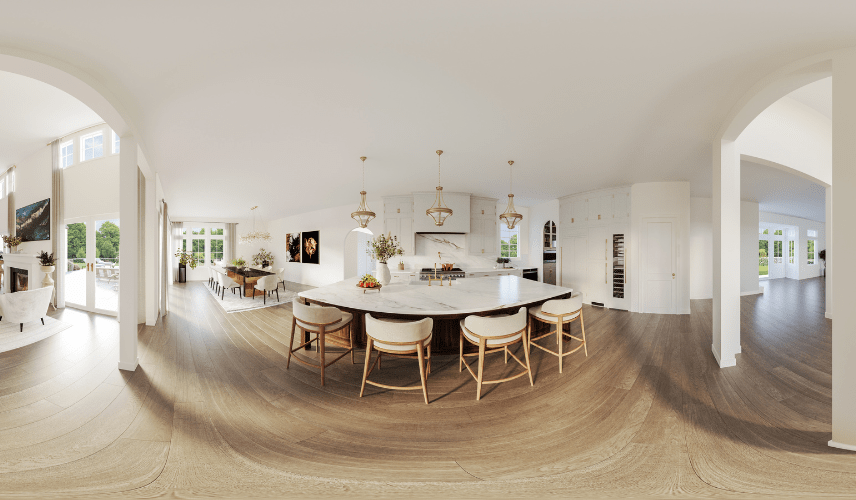
Dollhouse and floor plan perspectives provide contextual understanding that ground-level navigation alone cannot convey. These elevated viewpoints display entire property configurations simultaneously, revealing spatial relationships, circulation patterns, and room connectivity. Users transition seamlessly between plan overviews and detailed exploration, constructing comprehensive spatial understanding through complementary visualization approaches.
Tagged information hotspots enrich tours with contextual intelligence—clicking markers discloses information regarding finishes, appliances, features, or specifications without visual clutter. This stratified information architecture accommodates casual browsers seeking general impressions alongside serious buyers desiring detailed specifications, supporting varied research intensity within unified experiences.
Multilingual support dramatically expands market reach, particularly for properties targeting international buyers or situated in polyglot markets. Offering tours in multiple languages eliminates communication obstacles otherwise constraining audience scope, enabling properties competing effectively in global real estate markets where capital circulates internationally pursuing investment opportunities.
The Compelling Economic Justification for 3D Virtual Tours
Investing in 3D virtual tours generates measurable financial returns across numerous critical business metrics, from enhanced sales performance to streamlined operations and strengthened market positioning. Recognizing these tangible benefits transforms virtual tours from perceived marketing costs into recognized revenue drivers that fundamentally improve bottom-line results.
Comprehensive ROI data from across the property industry consistently confirms that 3D virtual tours dramatically improve listing performance. Real estate listings featuring virtual tours experience an 87% increase in viewer engagement compared to traditional photo-only listings. This substantial boost in attention happens because 3D virtual tours deliver the complete property information modern buyers actively seek—listings providing this comprehensive visualization naturally dominate attention compared to competitors offering limited visual content.
Even more striking is the fact that 54% of today’s property buyers explicitly state they won’t even consider listings without 3D virtual tours. This isn’t merely a preference—it represents a hard elimination filter. Properties lacking virtual tour technology essentially become invisible to more than half of all potential buyers, completely independent of their price points, locations, or architectural features. The competitive penalty for not implementing 3D virtual tours has evolved from a minor disadvantage into a critical business liability.
The impact of 3D virtual tours on sales velocity proves equally impressive, with properties selling an average of 31 days faster when marketed with virtual tour technology. This acceleration stems from multiple converging factors: prospective buyers develop stronger purchase intent and urgency after thoroughly evaluating properties through virtual tours, qualified prospects arrive at in-person showings already prepared to make decisions rather than still collecting basic information, and the complete transparency that 3D virtual tours provide establishes trust that speeds decision-making throughout the entire transaction process.
For properties targeting international markets, 3D virtual tours prove transformative, generating 3-5 times more inquiries from overseas buyers. Geographic distance ceases being an insurmountable barrier when international investors can comprehensively explore properties without expensive travel commitments. This expanded global reach becomes particularly valuable for luxury real estate, investment-grade properties, and markets that attract significant cross-border capital flows. Properties competing for international buyer attention without offering 3D virtual tours simply cannot compete effectively in today’s globalized real estate marketplace.
One of the most valuable operational benefits involves the reduction of unqualified property viewings by approximately 40% when utilizing 3D virtual tours. When potential buyers can thoroughly investigate properties remotely through virtual tours, they naturally self-qualify—only requesting in-person visits for properties that genuinely match their specific requirements. This improved qualification saves substantial agent time that was previously wasted conducting showings for unsuitable prospects, allowing real estate professionals to focus their efforts on serious buyers with higher conversion probability.
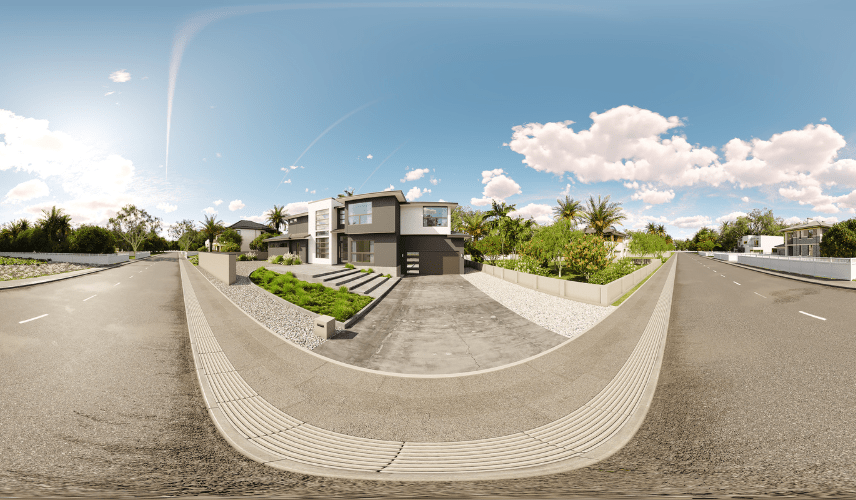
60° Panoramic View of a Modern Corner Residence in USA – Explore more 3D rendering project in United State here
The cumulative cost savings from fewer physical showings create significant financial impact. Every eliminated showing saves valuable time in property preparation, agent travel and coordination, and the administrative overhead of managing property access. For high-end properties requiring elaborate staging or commercial spaces with complex security protocols, the savings per avoided showing can be considerable. When multiplied across dozens of showings over typical listing periods, these operational efficiencies translate into meaningful budget improvements.
3D virtual tours create competitive differentiation across multiple strategic dimensions. Properties marketed with virtual tours stand out dramatically on listing platforms and real estate websites where the majority of competing listings still rely exclusively on static photography. This visual distinction captures buyer attention in saturated markets where numerous similar properties compete for limited consideration. Listings offering superior information through 3D virtual tours naturally command disproportionate attention and engagement.
The technological sophistication demonstrated by 3D virtual tours signals professionalism and forward-thinking innovation to potential clients. Real estate agents and developers offering virtual tour capabilities project an image of technological leadership and exceptional client service that influences buyer perceptions at every stage. Even before evaluating specific properties, buyers develop positive impressions of professionals who demonstrate innovation—impressions that translate directly into increased trust and preference throughout the sales journey.
The continuous 24/7 accessibility that 3D virtual tours provide means properties essentially market themselves around the clock without requiring agent availability. International buyers can explore properties during their local business hours regardless of time zone differences. Buyers working non-traditional schedules can research properties according to their personal availability. Interested prospects can revisit properties multiple times virtually, building progressive familiarity and confidence through repeated exploration. This temporal flexibility exponentially multiplies effective marketing exposure far beyond what traditional scheduled showings could ever accommodate.
Premium market positioning through 3D virtual tours signals high-value, professionally marketed properties that justify premium pricing expectations. When properties present themselves through sophisticated marketing technology including immersive virtual tours, buyers automatically perceive enhanced value and superior quality. This elevated perception translates directly into pricing power—properties commanding top-tier prices validate those premiums through exceptional presentation standards that prominently feature comprehensive 3D virtual tour access.
The evidence is unequivocal: 3D virtual tours represent not optional marketing enhancements but essential competitive infrastructure delivering quantifiable returns that justify investment across all property types, market segments, and price ranges in today’s technology-driven real estate landscape.
Strategic Virtual Tour Implementation
Successfully deploying virtual tours across property portfolios requires strategic planning, efficient execution, and systematic optimization based on performance measurement. Getting started involves assessing which properties benefit most from investment. Flagship properties, luxury listings, properties targeting international buyers, and difficult-to-show properties represent natural starting points where virtual tour benefits most clearly justify costs.
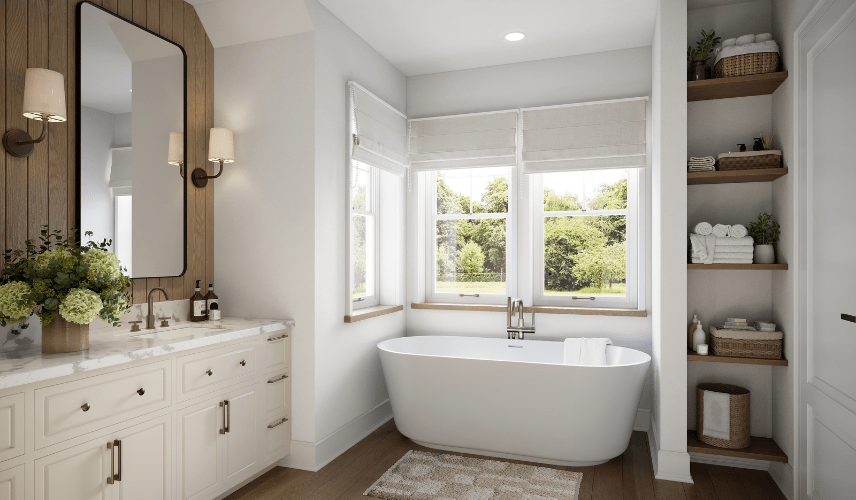
Budget allocation should consider virtual tours as marketing investments generating measurable returns rather than discretionary expenses. Comparing costs against expected benefits- faster sales, premium pricing, saved showing time, increased reach- typically reveals strongly positive cost-benefit relationships justifying budget allocation.
Choosing appropriate technology platforms matches solutions to specific needs. Luxury properties justify premium platforms like Matterport, standard residential listings work well with mid-tier alternatives balancing cost and quality, pre-construction properties require CGI rendering capabilities, and large portfolios benefit from platforms offering volume discounts and efficient workflows.
Marketing integration determines whether virtual tours deliver potential value. Virtual tours should feature prominently in all listings- on MLS platforms, property websites, and marketing materials. Social media promotion strategies should regularly highlight virtual tours, as interactive content generates higher engagement than static posts. Email campaigns announcing new listings should include virtual tour links as primary calls to action.
Measuring success quantifies virtual tour effectiveness and guides optimization. Key metrics include tracking engagement indicators like time spent in tours and rooms viewed, monitoring inquiry quality improvements, comparing performance metrics between virtual tour listings and similar properties without tours, and calculating cost-per-qualified-lead improvements demonstrating economic efficiency gains.
| Must read: How Buyers Use Virtual Tours to Confidently Evaluate Properties
Elevate Your Property Marketing Strategy
3D virtual tours have transitioned from innovative luxury to essential infrastructure in contemporary real estate marketing. The competitive landscape has shifted decisively- properties without virtual tours now face significant disadvantages as buyer expectations have permanently elevated. The 54% of buyers who won’t consider properties lacking virtual tours aren’t expressing lifestyle preferences- they’re applying elimination criteria based on information completeness expectations.
The measurable benefits virtual tours deliver- 87% more listing views, 31-day average sales cycle reductions, 40% fewer unqualified showings, and 3-5x international inquiry increases- demonstrate clear returns on investment that justify budget allocation across property types and price points.
MR Rendering Studio brings comprehensive expertise to virtual tour creation, offering both captured tours for existing properties and photorealistic CGI virtual tours (CG animation) for pre-construction developments. Their understanding of what makes virtual tours effective extends beyond technical execution to strategic marketing integration that drives measurable results. Whether you’re marketing a single luxury estate or an entire development portfolio, MR Rendering Studio‘s virtual tour services provide the immersive experiences that today’s buyers demand and that successful property marketing requires.
The transformation from traditional property marketing to immersive virtual experiences is complete. The question isn’t whether to adopt virtual tours but how quickly to implement them before competitive disadvantages become insurmountable.

Content Writer, Copy Writer
As a passionate content writer, Hoang Phuong specializes in creating high-quality, compelling narratives around 3D rendering and architectural visualization. Leveraging deep industry knowledge, Phuong excels at delivering information that is not only clear and creative but also genuinely inspiring, fostering stronger connections with clients and fellow professionals alike.
